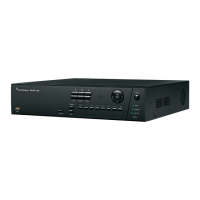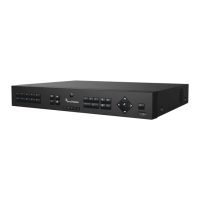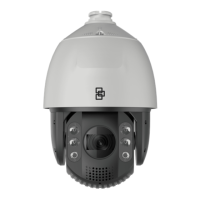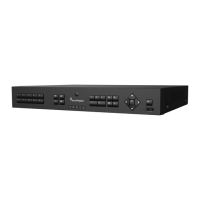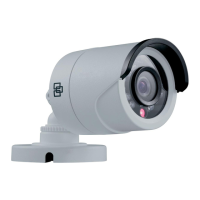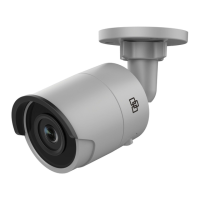Chapter 10: Camera setup
TruVision NVR 11 User Manual 75
3. Under Camera Name, enter a name for the camera, if required. The name can have
up to 32 alphanumeric characters.
4. Select the Display Name, Display Date, and Display Day checkboxes to display
the camera name, date, and week.
5. Select a date format and a time format.
6. Select how you want the camera information displayed.
Select one of the options from the drop-down list. Default is non-transparent/non-
flashing.
• Transparent & Flashing
• Transparent & Not flashing
• Non-transparent & Flashing
• Non-transparent & Not flashing
7. There are two colored text boxes in the camera view window; one for the camera
name (red box) and the other for the date/time (yellow box). Using the mouse, click
and drag a text box to the display position.
8. To copy the settings to other cameras, click Copy and select the desired cameras.
Click OK.
9. Click Apply to save the settings and then click Exit to return to live view.
Image settings
This function allows you to adjust image settings for each individual camera channel.
You may need to adjust the camera image depending on the location background in
order to get the best image quality.
You can also manually adjust the brightness, contrast, saturation, and hue values.
Note: These options can also be modified from the image settings button on the live
view toolbar (see “Live view toolbar” on page 31).
To adjust display settings:
1. From the menu toolbar, click Camera Setup > Image.
2. Under Camera, select the desired camera.
3. Under Image Setting, only Custom is available.
4. Adjust the brightness, contrast, saturation, sharpness and hue values by dragging
each scroll bar.
Click the Default button to return image setting values to the default position.
5. Select how you want the camera to rotate the image. There are two rotate functions:

